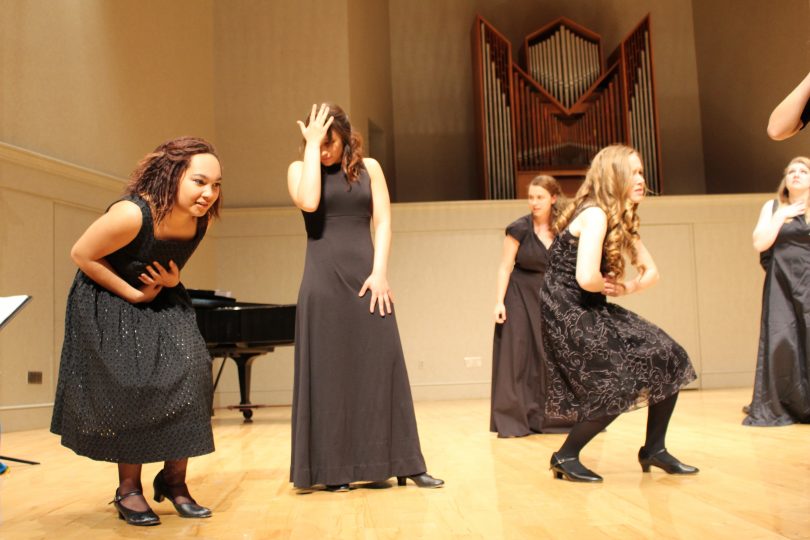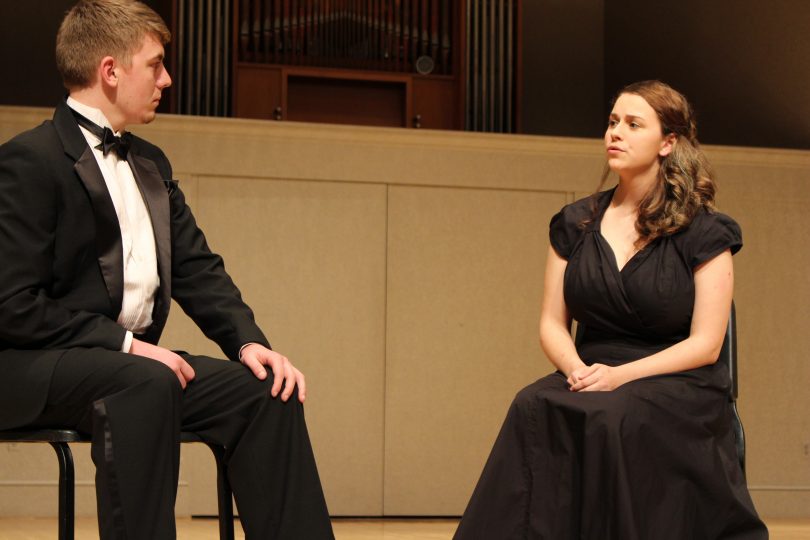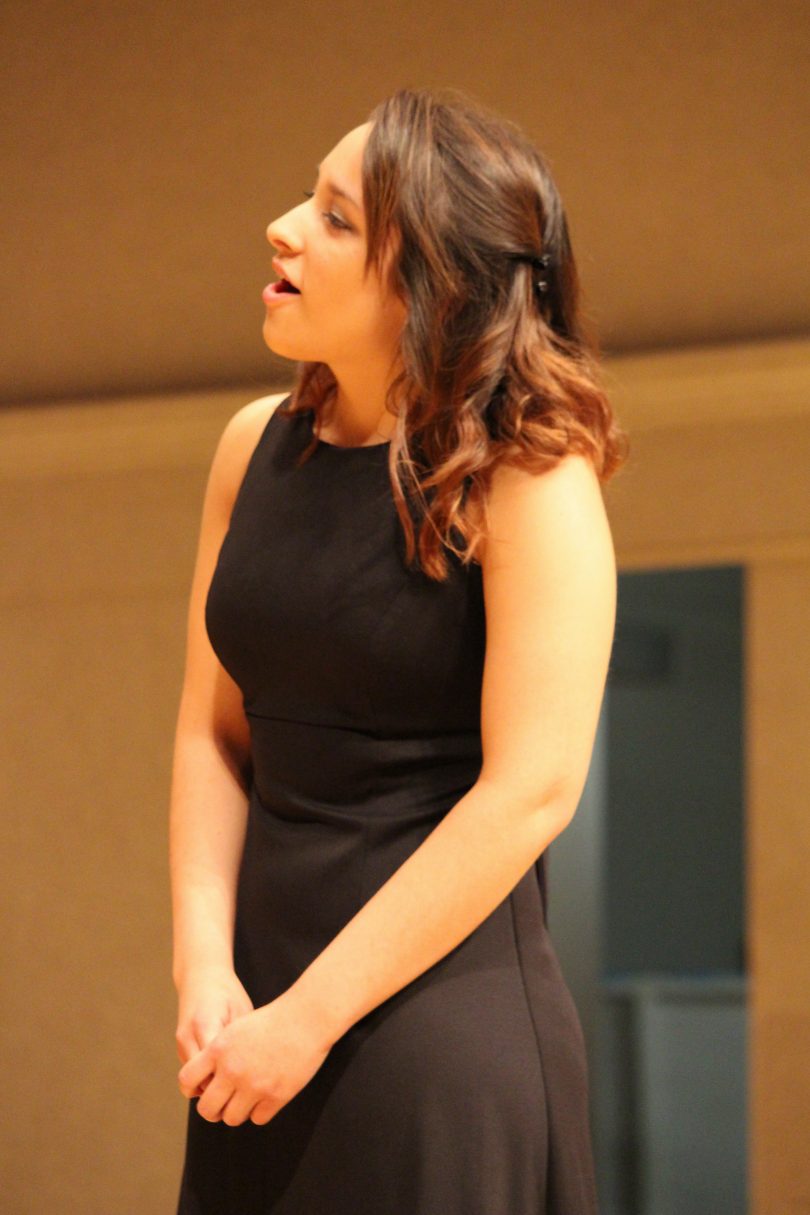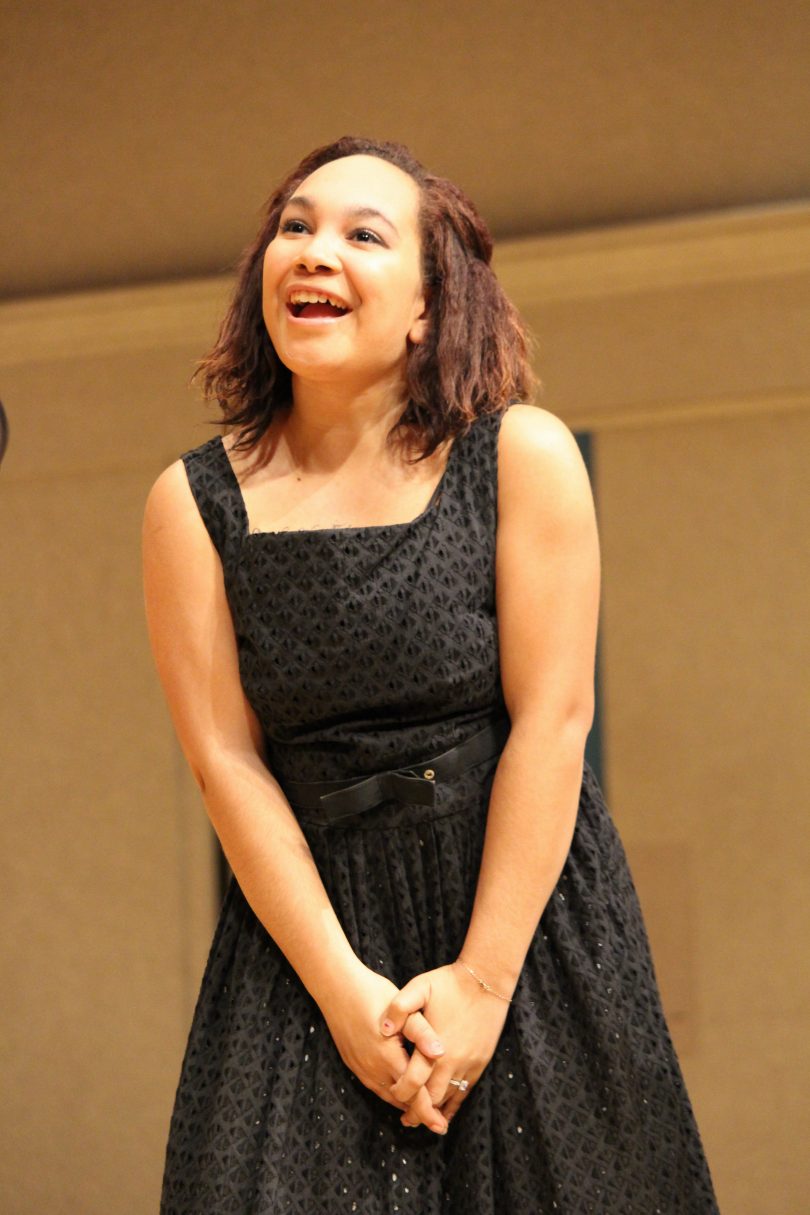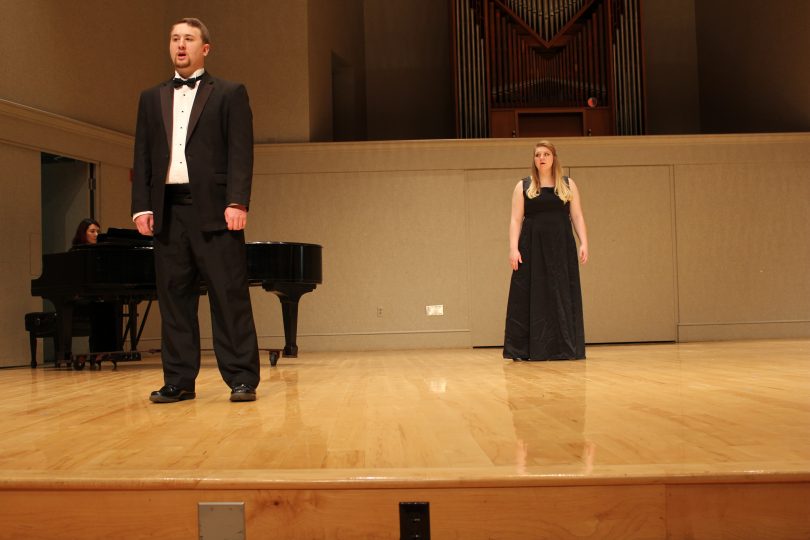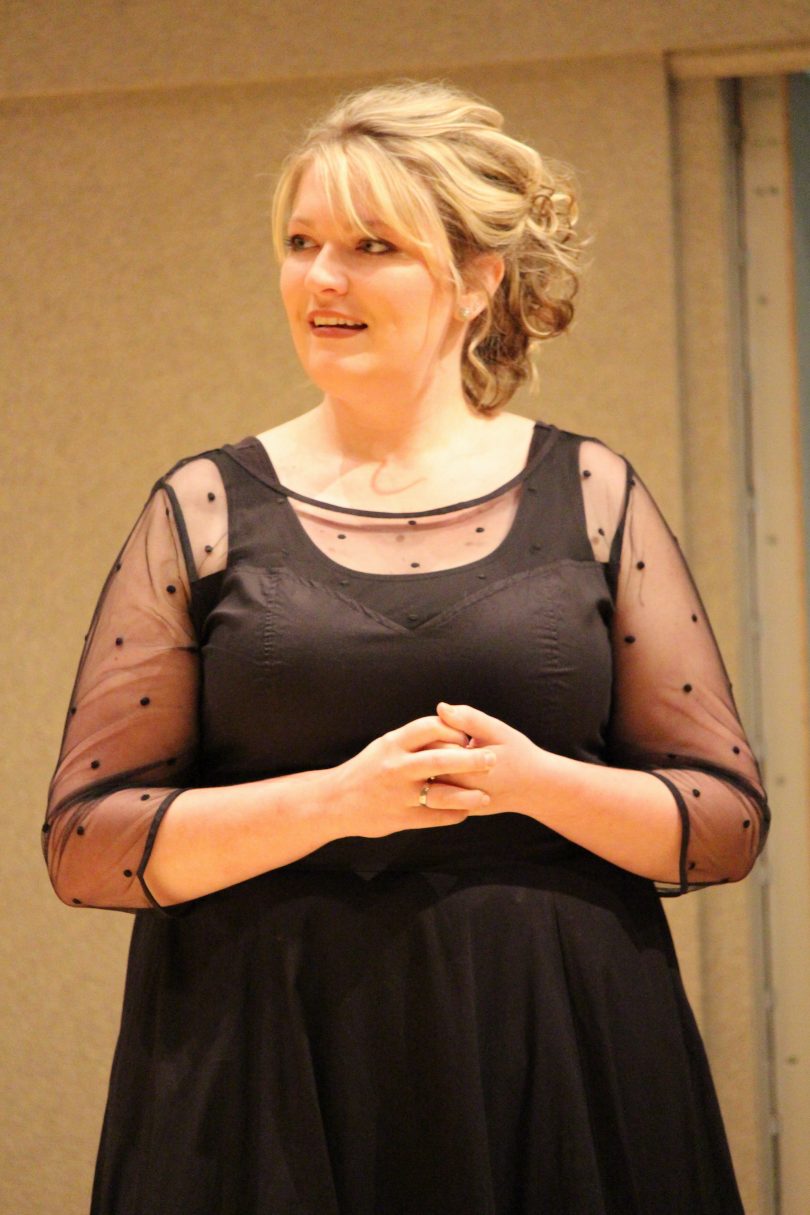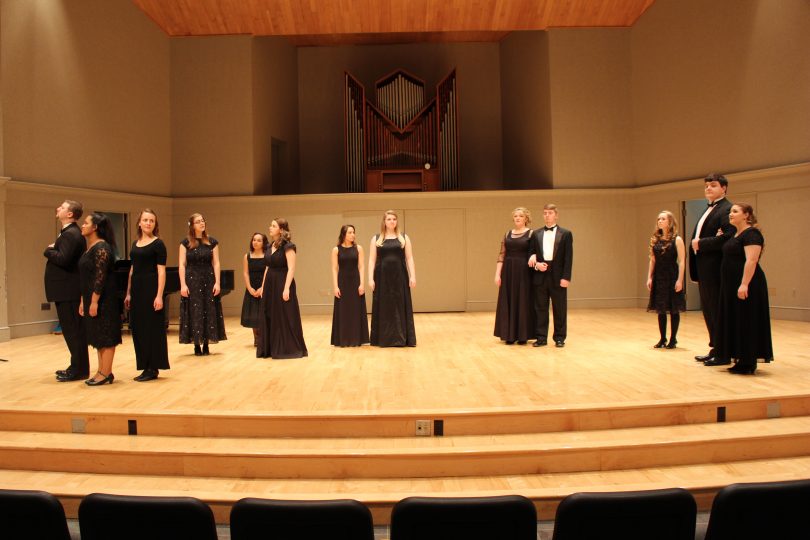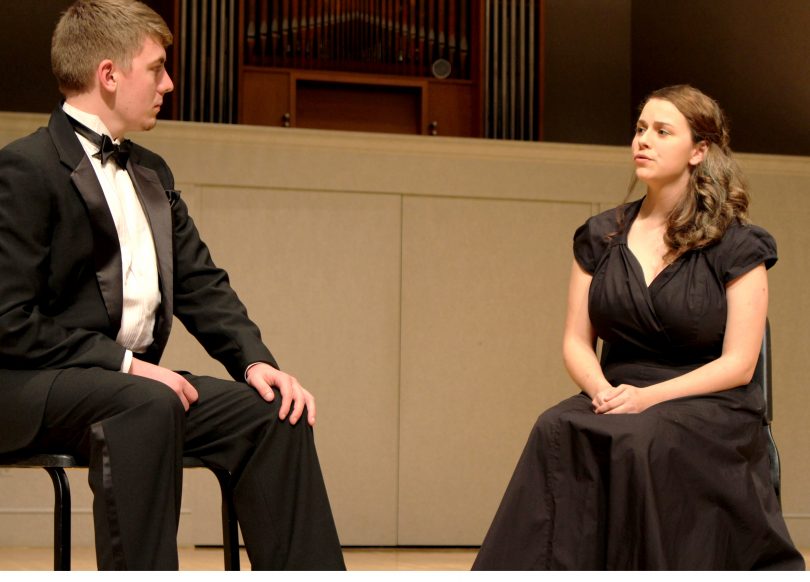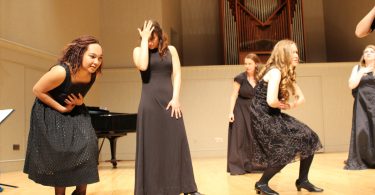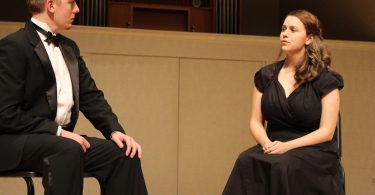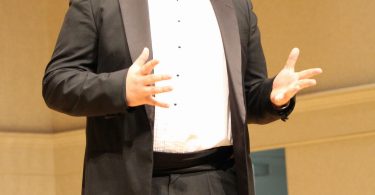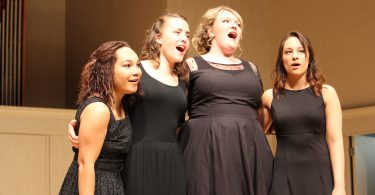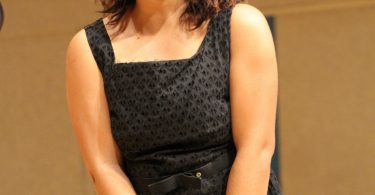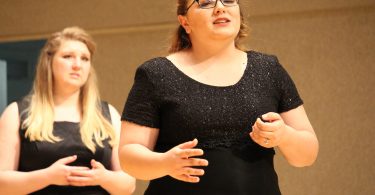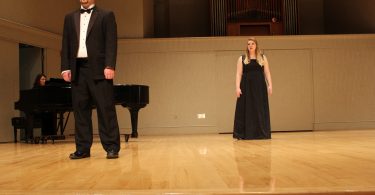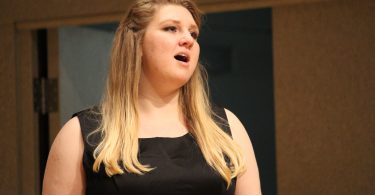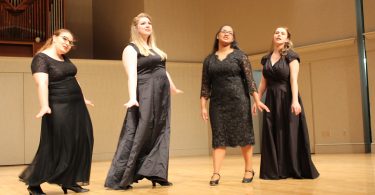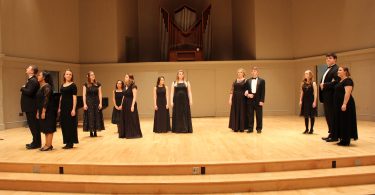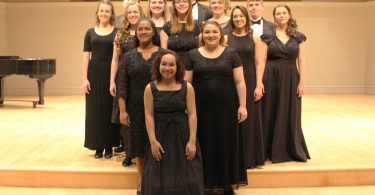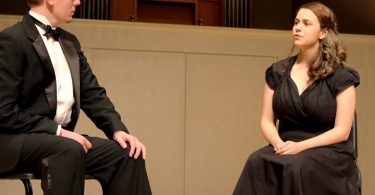Listen as Hannah Conklin goes behind the scenes to hear how the 100-year-old tradition of the May Day musical comes to life each year. This is the third in a series of audio features that take a closer look at what happens behind the scenes at Bluffton. Photos by Hannah E. Brown.
TRANSCRIPT:
CONKLIN: Hello, this is Hannah Conklin with a podcast for Bluffton University’s 96.1 The Wit. On this segment, I’m taking you behind the scenes of the May Day Musical, Sondheim on Sondheim.
I traveled all around campus speaking with students, faculty, and staff, and uncovering what this musical is about, what it’s like to be involved, and why the tradition of the May Day musical lives on. We’ll begin at a place most students have never gone before—the archives on the bottom floor of Musselman library.
There, I met with Carrie Phillips, the Archives and Special Collections Librarian, to find out what’s the deal with May Day anyway.
PHILLIPS: May Day is a spring ceremony or tradition that started in 1910. That was the very first May Day event in our history. And from 1910 to 1911, the event was very different than the May Day we know today. It was more of an educational event where there was picnicking on the lawn on campus outside, and there were various speakers talking about important issues of the day. Then in 1914, May Day started heading towards the tradition that we would recognize today.
CONKLIN: Has there always been a May Day musical included in the festivities?
PHILLIPS: There’s a long tradition of May Day musicals. The very first May Day theatre performance was happened in 1915. It wasn’t a musical performance, it was a play that was written by a student. Then, in the years that followed, Shakespeare’s plays were part of the tradition and then certainly musicals kind of become the tradition.
CONKLIN: Now knowing why the tradition of the May Day Musical is important, my behind the scenes journey took me to the two women responsible for making it all happen—Melissa Friesen and Crystal Sellers-Battle.
By going straight to the directors, I hope to get a sense of this year’s musical—what it’s about, how it’s chosen, and the process of putting it all together.
I started by asking what to expect in Sondheim on Sondheim.
FRIESEN: Sondheim on Sondheim is a review, so it’s a collection of songs taken from over 30 years probably of Steven Sondheim musicals. So we hear songs from well-known shows like A Funny Thing Happened on the Way to the Forum, West Side Story, Into the Woods, Company, many different musicals, as well as some songs that never made it into the final version of musicals.
SELLERS-BATTLE: What makes it a little different than a typical musical is that the songs are interspersed with videos of his own life talking about the background of which these songs are created, why they did or didn’t make it into the show, a little bit of his writing process, that sort of thing. We kind of get to see Sondheim in his natural habitat.
CONKLIN: How did you specifically arrive at Sondheim on Sondheim?
FRIESEN: Yeah, choosing the musical is always a difficult process. So Crystal and I work on this together to try to think about what might be interesting for us, what might be a good fit for our students, the range of student voices we have, and student performers. We think about variety, so we’re doing something different from year to year. This year venue was one key feature.
CONKLIN: Tell me more about how you work together. What’s that dynamic like?
SELLERS-BATTLE: Well we’ve been doing this seven years I think at this point, and because Melissa and I are friends outside, it made it a lot easier. We pretty much kind of see the same thing as far as the direction of the show we want to do, and the desired result. The process is usually picking things together and then dividing and conquering. Music goes first and then we do staging and then put the two of them together toward the end.
FRIESEN: I try to keep flowing the design process and the technical process.
CONKLIN: What are some of your biggest challenges putting together this show?
SELLERS-BATTLE: Coming up with the pit. I have to do the interaction outside of the university to get the folks that are actually going to play in the instrumental pit for the show.
FRIESEN: Another big challenge we have is scheduling. Trying to figure out when Crystal can have music rehearsals, when I can have blocking rehearsals. We only have one accompanist, so where does the accompanist go?
CONKLIN: What’s the process of putting together the cast like?
FRIESEN: We always do open auditions.
SELLERS-BATTLE: They come in, they sing, they do some movement exercises and other theatrical kind of games with Melissa during the process. And then we kind of make a decision of who we’d like to call back. This show, as far as who was in, was pretty easy. The next part that was really difficult was who is going to sing what and that took me a really long time to do. We had about a month from the time that we auditioned to the time that we started rehearsals so I spent all that time figuring out who’s going to sing what, and I always tell them in rehearsal Crystal is subject to change until opening night, and so there are some things that do change along the way. This one is probably harder than one I’ve ever done, just because I’m trying to take eight parts equally split and turn it into thirteen, not equally split.
CONKLIN: Finally, I’m curious, what does directing the May Day musical mean to you?
SELLERS-BATTLE: I would have to say the opportunity that it provides our students is really important for me. Being able to see them learn something that they wouldn’t know before. I love working with musicals. Conducting is not something I have a lot of experience with, as far as conducting instrumental groups prior to coming here. And so that’s a swift learning curve, so I’m literally air-conducting to the cast recording almost every day.
FRIESEN: And it really is an honor and a responsibility in many ways to have the musical during May Day weekend. That’s a long-standing tradition—over a hundred years at Bluffton to have a May Day performance—that’s an opportunity to showcase our student’s talent for the broader community and for our alumni base.
CONKLIN: My interview with the directors sent me on a search for the students involved in production work. The show wouldn’t go on without these students, and yet many people likely do not realize all they do behind the scenes.
Senior Brianna Lugibihl gave me the scoop on costume design.
LUGIBIHL: Before the show even begins, early at the end of last semester in December, I received what the show was going to be and I received my script early at the beginning of January and I start mapping out what my characters are going to look like on stage. And I look at who’s been cast in the roles and I decide what I’m going to do with the show. This show is a little different than the usual musicals you would see at Bluffton University, so instead of placing the characters specifically in the context of the show such as a time period or place, you’re showcasing all the works that Sondheim has done and the variety of those works.
CONKLIN: Now, Brianna, you’re also performing in the show. What is it like to balance all of those roles?
LUGIBIHL: Anytime that you work in theatre, you have to know that theatre doesn’t operate on the same schedule that other things do, so when you’re working with someone within a cast you have to be willing to work all your activities around your theatre schedule, and as costume designer, it’s the same thing. Balancing that takes a lot of time management but it’s something that I look forward to as someone who wants to work in theatre in the future.
CONKLIN: My final objective was to find more of this year’s performers to get their take on what it’s like to be front and center in the May Day Musical. I stopped by rehearsal in the Gilliom Room in Mosiman Hall to find out what really goes on behind the scenes.
There, I found two performers to tell me what it’s like to be in the May Day Musical. First up is junior Alicia Loch. This is her second time participating in the spring musical. She shared how her experience is difficult but fun.
LOCH: It’s very difficult, if you’re familiar with any Sondheim music like Into the Woods or anything like that, it’s very difficult, but it’s fun. Just as a student’s perspective, it’s hard to balance all the practice time and a full workload along with a full class schedule load, but you do it once and you have to keep doing it because it’s so much fun. Hopefully in the end it will turn out really well.
CONKLIN: Senior Kim Meyer expressed a similar experience participating in the musical.
MEYER: I have done musical all four years here at Bluffton. The last three years, I’ve acted. I really enjoy musical theatre which is a large portion of why I like staying involved in it. It’s a lot of work but it’s almost a stress relief in a way because it’s just a lot of fun and you get to work as a really close-knit group.
CONKLIN: This is where our behind the scenes journey comes to a close. From the library to the rehearsal room, we’ve heard the stories of those involved in this long-standing Bluffton tradition. The May Day Musical is an important part of the campus community today as well as the legacy of Bluffton University.
If you’re interested in seeing Sondheim on Sondheim, mark your calendars for May 5 and 6. Performances will begin at 7:30 in Yoder Recital Hall.
If you want to hear more podcasts giving you a behind the scenes perspective on Bluffton University, check out blufftonwit.com.
This has been Hannah Conklin, thanks for listening for 96.1 The Wit.


